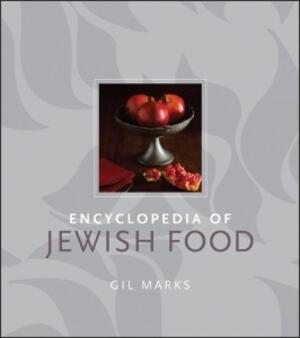Eating Jewish: 'The Encyclopedia of Jewish Food'
As an academic of Jewish food, I’m always on the lookout for new publications on the topic. It is a burgeoning area in which new research is being done all the time and a multitude of books and cookbooks are consistently being published. Despite wanting to buy all these books (especially the cookbooks), it is simply impossible, both financially and due to the fact that I can’t spend every waking hour reading about Jewish food (despite the fact that it would appear that’s what I do to the people close to me). However, when I found out about the publication of Gil Mark’s Encyclopedia of Jewish Food, I automatically knew that it would be a book that I had to own. Since buying my own copy, it has turned into a constant point of reference whether I’m writing a blog post for Eating Jewish or carrying out research for school. Yet, this is not only a book for students of Jewish food but for anyone who wants to learn more about the extensive range of foodstuffs that have influenced and become part of the foodways of the Jewish community.
The encyclopedia begins with an introduction in which Marks discusses some key issues surrounding the topic of Jewish food. With many in the United States associating Jewish cuisine with the cuisine of the large population of eastern European Jews that settled in the country, Marks highlights the array of countries in which Jews have settled, which have served to diversify what is Jewish food. Each of the regions in which Jews have lived, from Iran to Italy, have left their mark on the cooking of the Jewish community, thus making it so that “Jewish cuisine is the cuisine of the world.” Marks also touches upon the frequently asked question of whether there is something called "Jewish food." Despite having a cuisine that spans the globe, Marks explains that Jewish food can be defined through the way that Jews have adopted culinary traditions from the non-Jewish societies in which they have lived and adapted them to a Jewish lifestyle shaped by the dietary laws, the requirements of Shabbat, holidays and other life-cycle events.
With over 650 entries in the encyclopedia, many of which also include recipes, Marks provides readers with a substantial collection of information that doubles as a reference source as well as a cookbook. Entries in the encyclopedia are not limited to savory dishes and baked goods but also include entries concerning particular ingredients, such as carrots (93-95) and chickpeas (121-122), as well rituals and holidays, showing how each relate to the foodways of the Jewish community. Entries include some lesser-known dishes such as Adzhapsandali (3), which is a vegetable stew from Georgia that usually includes eggplant and Kimochdun (310), a festive bread from Afghanistan to which dried apricots and almonds are added. There are also entries for foods that are more familiar within the North American Jewish community such as Hamantaschen (248-250) and Challah (96-101).
There is no doubt that this is a well-researched book that includes an unequaled amount of information about Jewish food in one place, however I think that the addition of information under certain topics would produce more well-rounded entries. For example, the entry concerning bagels is focused on their development in the United States but it would have been important to mention Montreal bagels and their part in the development of this ever-popular bread in North America. The recent inclusion of the orange as a ritual element on the Seder plate by feminists and others within the Jewish community could also have been included in the entries concerning the orange (428-430) or the Seder (539-514), in order to provide some information about contemporary practices.
The Encyclopedia of Jewish Food has quickly become one of the books I always have close at hand and I think it would be a welcome addition to anyone’s bookshelf. It allows one to explore the expansive world of Jewish food, giving readers a better understanding of the various communities that make up the Jewish community and hopefully imparting “a sense of unity, understanding, and inspiration” that comes through the sharing of food and foodways.







